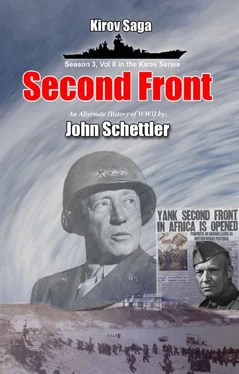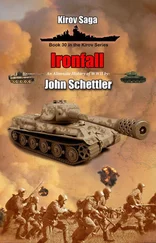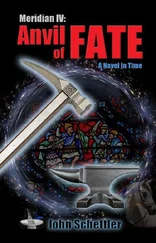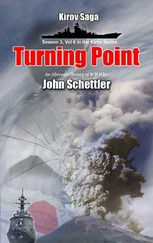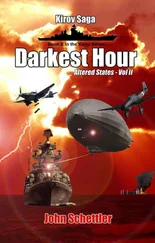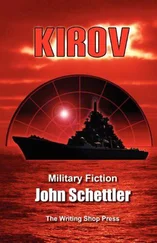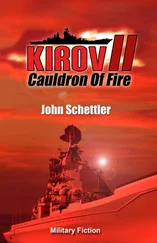Karpov blinked, thinking. Then Rodenko reported again, and the Admiral inclined his head, listening, though his eyes were still locked on Fedorov.
“Sir, missile launch detected by MR-800 Flag radar system at 188 degrees, 60 nautical miles. They’re firing at our KA-40. It’s an SM-2.”
Now Karpov turned. “Not very sporting of them. Signal that helo to drop elevation at once, get them right down on the deck. Do we still have a fix with our other helo?”
“It’s being jammed, but I still have good confidence on the contact location.”
“Then it’s time we settled this. Mister Samsonov, Moskit II system. Set attack profile to extreme low altitude with evasion on final approach. Eight missiles please. Target the contact and fire when ready. Rodenko. How’s our KA-40?”
“Descending… Descending… They’re using ECM now sir… I think they’ve spoofed that missile.”
“Good. If they survive, have them climb again and reacquire the contact to help our missiles along. Now let’s see how they like our Sunburns.”
DDG-180, JS-Takami, Sea of Okhotsk, 20 May ~14:40
“I’ve reacquired the KA-40,” said Otani. “They dropped elevation and hit our last missile with ECM.”
“Put one more on the damn thing,” said Harada. “Let’s keep them dancing.”
“Incoming!” said Otani. “J/OPS-28C has a missile at 20 nautical miles. SPY confirms, multiple contacts inbound.”
“Mister Honjo, weapons free. Knock them down.”
“Salvo of eight missiles this time—Sunburns.” Otani tagged the threat, and everyone on the bridge tensed up. They weren’t seeing these missiles until they broke the horizon at about 20 miles, which meant the Russians were also doing a number on their Sea King’s radar. Admiral Kurita had them in his binoculars at about the same time as they streaked past his position, one after another, a long train of potential destruction.
“That will make twelve in all,” said Fukada. “With what they threw at other targets earlier, this looks like they’re pushing all their chips out on one last number.”
He was wrong in that, for he was still assuming Kirov would have only 20 SSMs aboard, when in fact it left Severomorsk with three times that number. In they came, and only Otani could see it playing out in real time. It was coming down to seconds now, not minutes. Soon the watch called out they had tail fire on the Mark 1 Eyeball. Then Harada gave an order that no one expected.
“Signal the Kurita group. Tell them that unless they hear from us in five minutes, we strongly advise they withdraw.”
Then the deck erupted with fire and the SM-2s leapt up, heading for their targets. “Vampires at 10 nautical miles,” said Otani. “Splash Vampire 1!”
They were firing the SM-2s in pairs again, assigning a lead missile and a wingmate to every Vampire. The theory was that a ship would always carry more SAMs than the number of SSMs the enemy might be packing.
In they came, and the sky suddenly lit up with more explosions, and every single one saw the crew breathing just a little easier. They got five more missiles, one after another, with Otani calling out each kill. It was now down to the final two Vampires and there were still six SN-2s in the air out after them. Harada had been looking over Otani’s shoulder, not realizing that his right hand had tightened to a fist and his nails were biting into the flesh of his palm. He took a deep breath, opening his hand. It was looking good. Then they heard the laser firing at just inside the seven mile range.
“Laser hit! Splash Vampire 7.”
The pair of SN-2s double teamed the last missile, and they took it down at the six mile range marker, the brilliant red-orange explosion vibrating the ship with the shock wave. The last four SM-2s ran blind and slit their throats about twelve miles out.
Battlecruiser Kirov, Sea of Okhotsk, 20 May ~14:45
“Missile eight is gone,” said Samsonov. “Nothing got through, sir. They threw sixteen SM-2s at them.”
Karpov was not happy. “So now we see just how good the American tech is. Twelve fucking Moskit IIs, and not one gets through.” He stroked his chin, thinking.
“SSM inventory,” he said with a growl.
“Sir, we have 24 missiles on the Moskit II system, 10 MOS-III, and 6 on the P-900 system—40 missiles in all.”
Karpov looked at Fedorov now. “Nice of Mother Time to leave the MOS-IIIs alone, eh Fedorov? At least nothing has changed on that count. They are quite a bit faster to the target. Let’s see if they can catch lightning. Mister Samsonov, one MOS-III—just one please.”
“Ready sir.”
Karpov looked over. “Mister Grilikov, why don’t you do the honors and fire this missile.”
Grilikov had been watching, somewhat dumbfounded at Samsonov’s side. Now he blinked, looking at his teacher, who quietly moved his thumb to point to the correct switch, then he winked.
Grilikov fired.
The MOS III was a descendant of the P-800 Onyx missile and the work that was done on the Brahmos/Yakhont system for foreign export. The Russians were looking to compress the response time for the defender even more, and in the balance of stealth vs speed, they usually opted for speed. What they wanted was a hypersonic missile, and the first SSM to fill that bill was the Zircon 3M-22, and the 3M stood for MOS-III. That original design was first introduced in 2017, and was capable of speeds up to Mach 5, but the missile Kirov was carrying was an upgrade, the 3M-33, still called MOS-III by the rank and file.
It could run at Mach 7, faster than the hypersonic rounds of a rail gun, and now Karpov wanted to see if this enemy ship could defeat it. Counting time for acceleration, it was going to eat up about 2.4 kilometers per second. One missile went out, and closed the 62 nautical miles between the two ships in just 47 seconds. It was also stealthy, a sea skimmer, and it was not seen by Takami until it had penetrated the 20 nautical mile threshold.
“Fast missile inbound!” shouted Otani. “My God, it’s running over Mach 7!”
That was fast, but there was one thing faster. The lightning reflexes of the modern day AEGIS system acquired the contact at 17.6 nautical miles. The fire order pulsed to the missile deck. And two SM-2s went out to challenge the intruder. Before they had even acquired their target, the MOS-III was just 10 miles out…. Six miles… The SM-2s had just tipped over and began accelerating towards the Vampire, but it was too fast, too damn fast… But one thing was faster.
It was Takami’s laser system pulsing out at the speed of light. Five miles out, the missile was struck. Its inertial guidance system was fried, a split second later it was blind, with further damage to its steering that sent it careening wildly off course destroyed inside the four mile mark when it struck the sea, and then exploded. The two SM-2s streaked right over that spot in the sea, late to the party. They continued on for another 10 seconds, trying to decide what happened before they found no threats and self destructed.
It was as close a shave as one could get, but Takami survived.
Karpov watched the whole engagement on radar, pointing to the missile tracks Rodenko had on the defensive fire. “Those are the two missiles they fired? No others?”
“Just two sir, SM-2s.”
“Any malfunction reported on our missile?”
“No sir, the telemetry was clean until it went down.”
“Well now… This is very interesting. They must have hit that MOS-III with something else, but not a Phalanx gun. Look, our telemetry is cut off here, a little outside the range of their gun system.”
“Sir, I got an unusual emission during our Moskit II salvo, and I picked it up again just now. I think they have a laser defense system.”
Читать дальше
